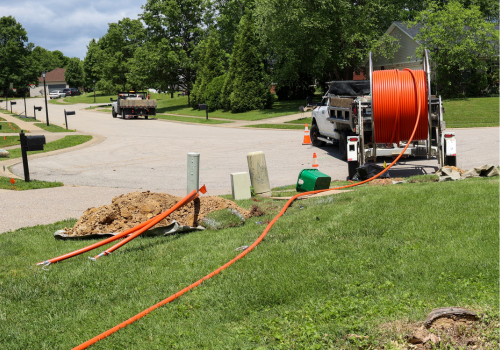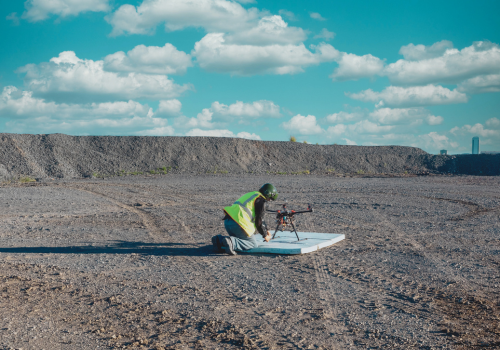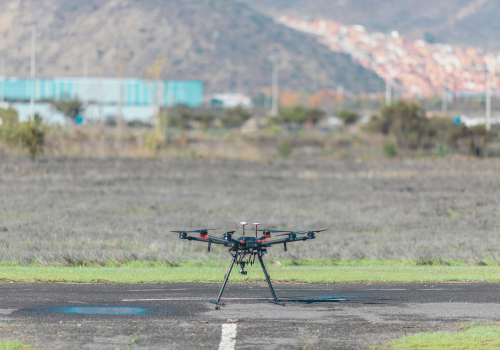Utilities are leading the way to a more sustainable future with a lot of assistance from technology. Transitioning from fossil fuels to renewable energy, improving network resiliency, and allowing for more efficient management of resources are all made possible with advancing technology. In a recent survey from Accenture, 98% of utility executives agree that emerging technologies are enabling their organization to have a broader and more ambitious vision.
Here are the technologies we think you will be hearing a lot more about in 2023, with some insight into applications for electric, natural gas, water, and wastewater utilities.
Internet of Things and real-time monitoring
IoT solutions are a huge business and the global utilities market is expected to invest $41.8 billion in 2022. By 2032 investment will reach a whopping $132 billion (per Future Market Insights Global and Consulting).
With embedded sensors connected to the internet at unmanned locations such as substations, hydro dams, or pumping stations, utilities can get real-time insight into issues that require inspection and maintenance. Smart meters not only eliminate the cost of manual meter reading, but they also allow consumers and businesses to track their energy consumption, which in turn drives energy conservation. Real-time notification of when and where outages occur means power can be restored faster.
As the industry moves toward more sustainable sources of power from solar, wind, hydropower, and biomass units, IoT devices will connect distributed sources and create a virtual power plant where all participating units are networked through a central IT control system.
With about 27% of the contiguous United States currently (October 2022) experiencing extreme drought, water scarcity is a huge issue for many water utilities. Smart Water Management uses an array of IoT technologies to increase transparency and develop more sustainable strategies for the use of water resources. IoT in water utilities can result in more efficient leakage detection and optimal water distribution, leading to better customer engagement and allocation of water. The Center for Water Agency Efficiency at UC Davis found that on average, 17% of water is lost before reaching end users in urban centers. Utilities such as San Jose Water have found success with acoustic leak detection sensors mounted on special fire hydrant caps that monitor sounds within the water system to identify acoustic anomalies indicative of leaks.
Artificial intelligence
Artificial Intelligence (AI) is everywhere, and new applications in utilities continue to be explored. The market for AI in Energy and Utilities is forecast to reach $4.5 billion by 2026, growing at a CAGR of 32.75% from 2021 to 2026. One of the more interesting applications involves the use of AI to capture more wind energy. Global wind turbine provider Vestas Wind Systems has used Microsoft Azure computing and Azure Machine Learning to generate more energy from wind turbines through wake-steering systems controlled by artificial intelligence. Instead of focusing on individual wind turbines as free-standing units, a new flow model predicts the power production of each turbine in the farm depending on the incident winds in the atmosphere and the control strategy of each turbine. The model considers that wind turbines cast a wake that can slow turbines located downstream. Learning from operational wind farm data, scientists find the optimal orientation for the turbines at a given moment. While the increase in energy output is relatively small -about 1.2 percent overall, and 3 percent for optimal wind speeds, the algorithm can be deployed at virtually any wind farm.
Another application for AI addresses one of the key challenges associated with a grid that relies on variable renewable energy sources and that is predicting capacity levels. AI, along with sensor technology and real-time data from solar and wind generation can be used to predict capacity levels, which means greater grid stability.
Wastewater operations are using AI to reduce their carbon footprint. According to the EPA, drinking water and wastewater systems account for approximately 2 percent of energy use in the United States. Amane Advisors, a global consulting firm focused on the water industry, reports that savings of 30-40% in energy costs for aeration are possible.
Green hydrogen
The declining cost of renewable energy has spurred interest in green hydrogen—a hydrogen fuel created using renewable energy instead of fossil fuels. Here also, digital technology can play a role in accelerating the transition, by helping reduce costs. The artificial intelligence of things (AIoT) – a combination of artificial intelligence and internet of things technology can be used to enable the optimization and automation of systems through enhanced data management and analytics.
Green hydrogen is produced through the electrolysis of water, leaving nothing but oxygen as a byproduct. It has the potential to decarbonize energy-intensive processes such as making steel and cement, as well as in shipping and transportation where it can be used as fuel. Green hydrogen can also be used with fuel cells to power anything that uses electricity, such as electric vehicles and devices. Unlike batteries, hydrogen fuel cells don’t need to be recharged. Florida Power & Light is slated to complete a 20 MW green hydrogen plant by 2023. In February, Southern California Gas Co announced what would be the largest green hydrogen infrastructure system in the US—Angeles Links. It will use wind and solar to produce hydrogen, reducing reliance on fossil fuels, especially in the transportation, manufacturing, and electricity sectors.
PFA remediation technologies
PFAS are widely used, long-lasting chemicals, components of which break down very slowly over time. Current research suggests that exposure to high levels of certain PFAS may lead to adverse health outcomes. New PFAS remediation technology from EPOC Enviro has been proven to remove more than 99% of long-chain, and most short-chain PFAS compounds from water and soil. Surface Active Foam Fractionation (SAFF) separates PFAS from water or soil and concentrates it without the use of chemicals or adsorption media that leave behind residue. As bubbles rise through water columns PFAS attach to the bubbles and foam is formed at the top of the column. The foam is then collected and concentrated. In the second stage of the process, AECOM’s DeFlouro Electrochemical Oxidation Cell technology is used to permanently destruct the forever chemicals. The Minnesota Pollution Control Agency Is using the technology to address PFAS contamination in the drinking water of 174,000 residents in Lake Elmo, Minnesota. The technology is being funded by a landmark settlement with 3M. The SAFF unit in Minnesota is one of only 10 units in use worldwide.
Autonomous drones
Drones or unmanned aerial systems have proven their value among utilities despite regulations that limit their ability to be flown beyond the line of sight of the operator. They reduce the need for costly and dangerous inspections, improve the quality of data collected and save time. According to Drone Industry Insights, the global drone market size is forecast to reach $55.8 billion USD by 2026 with the commercial market growing at 8.3%. Energy is currently the largest segment of the commercial drone market.
Autonomous drones will allow utilities to scale up their drone usage because technically they do not require a pilot. Instead, autonomous drones are flown via an onboard autopilot, computer, and sensors. Automated drones combined with AI analytics make the collection of detailed data more efficient, consistent, and rapid. And while the pilot must be present under current regulations, autonomous drones make it much easier for pilots. Eventually, data can be collected to build a safety case for the use of automated drones without the direct oversight of a human operator or pilot.
In April 2022, Florida Power & Light Company (FPL) announced plans to deploy 13 autonomous drones and hundreds more over the next five years. The drones will be coordinated on a single platform through Percepto’s Autonomous Inspection and Monitoring (AIM) solution, which was named one of the 100 Best Inventions of 2021 by Time magazine. FPL has acquired a nationwide waiver to fly Percepto drones for surveillance and inspection purposes at sites owned and serviced by FPL.
Drones are also playing a critical role in the inspection of wind turbines and solar panels. FPL uses drones equipped with thermal imaging to identify dead spots and defects in solar installations at installation and during annual inspections.
New-Jersey-based ABJ Renewables has been able to increase the electricity coming out of wind farm assets by 30% using its WindVue technology. Using both thermal and optical inspection, drones are used to detect substructural internal wind turbine generator blade defects such as bonding, delamination, cracks, and potential lighting damage.
Subscribe to The Utility Expo monthly newsletter to receive more industry insights like this.
Read Next
Top Tech Trends for Utilities in 2022
Drone Powerline Inspection: What To Consider And How To Choose The Best Drone
5 Aerial Lift Innovations That Will Improve Your Bottom Line












